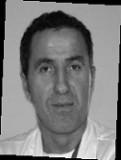HealthManagement, Volume 3 - Issue 1, 2009
Combined Approach to Patient Management May Yield Substantial Savings
Coronary artery disease (CAD) is presently the most common cause of death in industrialised countries. Consequently, diagnosis and treatment of cardiovascular diseases represents a large drain on resources. In this challenge, stress imaging techniques represent a cornerstone in the management of stable patients and have demonstrated, over the years, their role as an effective gatekeeper over the use of more invasive and sophisticated techniques. However, this is obtained at an excessive cost to society.
From a healthcare policy perspective, the value of strategies for
the management of patients with chest pain should rely not only on diagnostic
accuracy, the absence of side-effects, and the cost of the procedure, but also
on the pre-test probability of significant CAD, the cost of additional tests
and treatments that the results may induce, the costs of events that may be driven
by a subsequent treatment (i.e. a coronary angioplasty), and the quality of life
of the patients. Unsurprisingly, cost efficiency analyses are increasingly seen
as solutions for integrating both economics and efficacy into one indicator to
be used to compare different therapies, technologies or global clinical
strategies relative to one another.
Cost-Efficiency Analysis in Clinical Diagnosis
The importance of a cost-efficiency analysis in clinical diagnosis depends, in general, not only on the costs related to the choice of the initial diagnostic technique, e.g. direct catheterisation versus stress imaging techniques, but also on the extent to which the test selected as the first line approach induces the use of additional resources, i.e. the overall clinical strategy.
Strategies employing myocardial perfusion scintigraphy (MPS) have proven very cost-effective in several clinical scenarios. In patients with stable angina and intermediate pre-test probability of CAD, strategies including MPS have consistently shown to be more cost-effective than the conventional exercise ECG. In addition, a management strategy based on MPS data results in 23% to 41% cost savings compared with a direct referral to coronary angiography.
Despite the higher direct costs of MPS with respect to
conventional exercise ECG, MPS is more cost-effective because of its higher
diagnostic accuracy and prognostic power, thus allowing a reduction in
resources use for patients with a normal test result. Marwick et al. reported
that a normal exercise ECG does not prevent additional diagnostic testing and
causes an unexpected increase in the use of coronary angiography; on the
contrary, patients with a normal MPS are infrequently referred for additional investigations.
MPS May Lead to Cost-Savings
In patients with overt CAD, MPS may also lead to significant cost savings by limiting expensive therapeutic procedures to patients with high-risk scans who have the most to gain from an intervention.
In particular, the cost-effectiveness of MPS is particularly notable when we examine the results of this technique when applied to women, with a significant reduction in the number of normal coronary angiograms and an increase in the identification of those patients with multi vessel coronary disease (from 23% to 42% of patients) as compared to a strategy including a direct referral to the cathlab as first line intervention strategy.
There are, however, studies reporting different conclusions. Hernandez and Vale, applying a probabilistic model analysis, concluded that strategies that involve the use of SPECT seem to be optimal for low levels of prevalence of CAD, and in this setting they would reduce the number of invasive tests required.
For high levels of prevalence of CAD, the result seems to be the
opposite; that is to say, strategies that involve the direct referral to
angiography seem to be optimal. The conclusions of such an approach, however,
seem to be limited only to the detection of the anatomical aspect (CAD) and do
not consider the physiological aspect, i.e. the presence of ischaemic heart
disease.
Appropriate Patient Selection Essential
In a more comprehensive clinical vision, both the detection of myocardial ischaemia and the associated risk stratification would more efficiently impact on the selection of the appropriate patient management, e.g. revascularisation versus medical treatment. In this context, strategies including stress imaging techniques demonstrated a better cost-effectiveness with respect to those including a direct referral to an invasive approach. It is worth noting that, in all class of pre-test likelihood of CAD, the two strategies resulted in a comparable event rate at follow-up.
The previous considerations also apply to the non invasive
assessment of coronary anatomy by multi slice CT angiography (MSCT); in
particular, when considering risk stratification as the major clinical decision
point in both asymptomatic and symptomatic patients, appropriateness criteria
for MSCT had recently obtained either uncertain or inappropriate scores.
MPS more Cost-Effective than Stress ECG?
Most of the considerations of MPS results in a strategy that is more cost-effective than stress ECG or direct referral to the cath lab. Of course, these considerations might also be applicable to stress echocardiography, and the choice of the imaging stress modality (echocardiography or radionuclide imaging) often depends on which test is most available at a given institution and in local variation in accuracy.
However, in studies where head-to-head comparison between MPS and stress
echocardiography were performed in the same population for vasodilators,
dobutamine, and exercise stress tests, MPS demonstrated higher sensitivity and
equivalent specificity.
A Lower Rate of Adverse Events?
In addition, the negative predictive value of MPS for annualised hard event rate has been demonstrated to be significantly higher than that of stress echocardiography both in the general population and in patients with known CAD. This translates to a very low event rate in patients with negative MPS (<1%) when compared to patients with negative stress echocardiography (approximately 6%).
These rates of adverse events are too high to be fully effective in categorise a patient as “low risk”, particularly in patients with intermediate to high pre-test likelihood of CAD or known CAD, and a clinician is unlikely to be so confident on a negative test as to justify no additional testing.
However, the lower cost and the sufficiently high accuracy make
echocardiography economically attractive for lower risk diagnostic populations.
Conclusions
Widespread application of a combined clinical and stress imaging driven approach to patient management could result in substantial cost savings for the healthcare system, and in a survival benefit for those patients at risk of major cardiac events. In lower risk populations with suspected coronary disease stress echocardiography may be considered as the first line diagnostic test whereas, for intermediate- to-high-risk patients (including patients who are diabetic, with peripheral arterial disease, chronic kidney disease, or pre-surgical risk stratification), literature results support the use of the slightly more expensive nuclear cardiology imaging.
References:
A full set of references for this article are available on request to the Managing Editor at [email protected]







